Both lunar and solar eclipses can only occur when the Earth, Sun and Moon are directly aligned… and that alignment is about to happen just four days before Christmas! While the winter treat of totality will lend itself to North America, many other parts of the world will be able to enjoy a partial eclipse as well. Just remember your time zones and I’ll post specific times and locations just a little closer to the date. Right now, let’s learn more!
What is a partial eclipse or totality? When the Earth’s shadow engulfs the Moon, it is a lunar eclipse which occurs in two phases. The outer shadow cone is called the penumbra and the dark, inner shadow is called the umbra. A round body, such as a planet, casts a shadow “cone” through space. When it’s at Earth, the cone is widest at 13,000 kilometers in diameter, yet by the time it reaches the Moon it has narrowed to only 9,200 kilometers. Considering the distance to the Moon is 384,401 kilometers, that’s hitting a very narrow corridor in astronomical terms!
As a rule of thumb, remember that the Moon moves about its own diameter each hour, so the very beginning of a penumbral eclipse will be difficult to notice. Slowly and steadily, the coloration will begin to change and even inexperienced eclipse watchers will notice that something is different. The Moon will never completely disappear as it passes through the Earth’s umbral shadow cone, either. Thanks to our atmosphere bending the sunlight around us, it scatters the light and refracts the signature red and copper coloration we associate with lunar eclipse. Why? Just the small particles in our air – dust and clouds – the shorter wavelengths of light from the Sun are more likely to be scattered (in this case, red) and that’s what we see. Exactly the same reason sunset and sunrise appears to be red! If you’d like to dedicate a portion of your mind to science, then try judging the eclipse coloration on the Danjon scale. It was was devised by Andre Danjon for rating the overall darkness of lunar eclipses:
L=0: Very dark eclipse. Moon almost invisible, especially at mid-totality.
L=1: Dark Eclipse, gray or brownish in coloration. Details distinguishable only with difficulty.
L=2: Deep red or rust-colored eclipse. Very dark central shadow, while outer edge of umbra is relatively bright
L=3: Brick-red eclipse. Umbral shadow usually has a bright or yellow rim.
L=4: Very bright copper-red or orange eclipse. Umbral shadow is bluish and has a very bright rim.
Now we know what to plan for! Time to get your winter gear ready. Photographing or video taping an eclipse is easy – but remember if you live where it is very cold that your batteries will expire fast – so keep an extra set in a warm place next to your body.
Be sure to check back for specific times and locations here at UT on December 20th… and tell your family and friends about the very special Christmas present that’s coming your way!
Eclipse Images Courtesy of Doug Murray (top), Tom Ruen (bottom) and NASA (center illustration). We thank you!



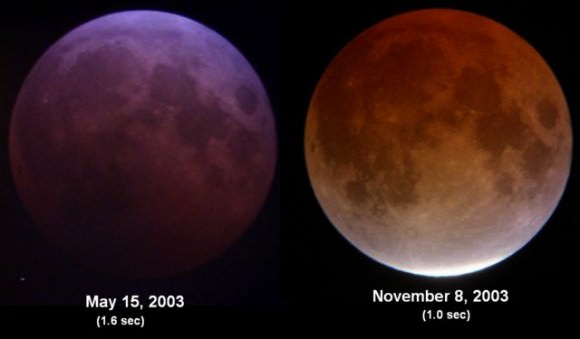
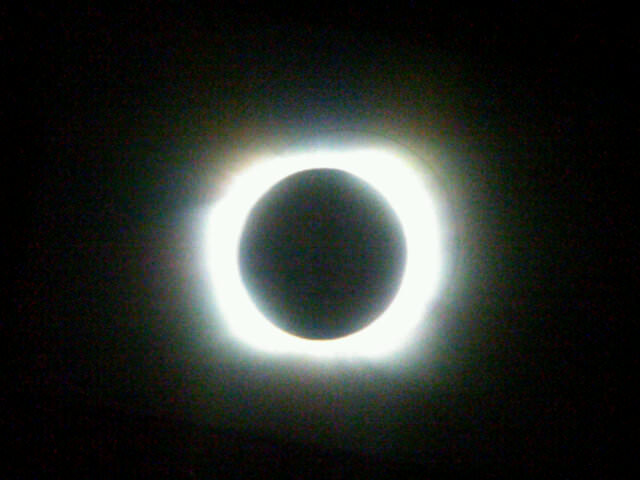
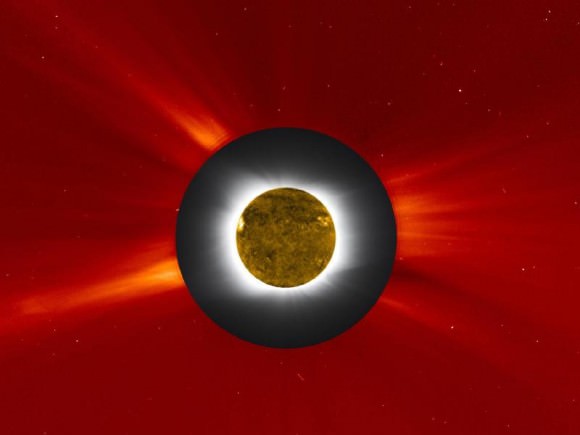
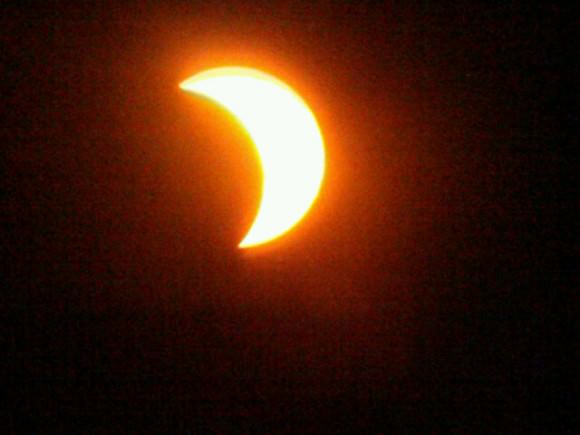
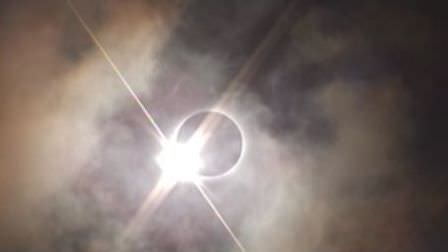
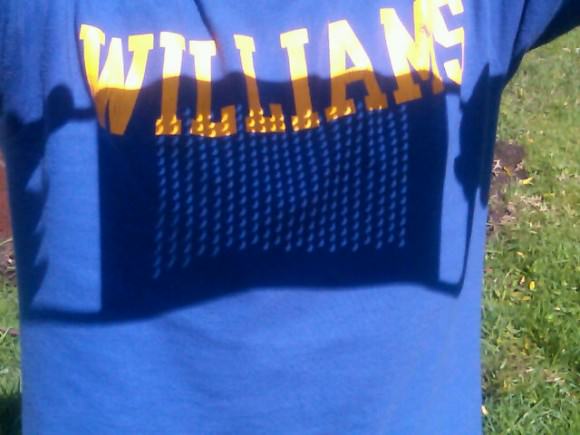
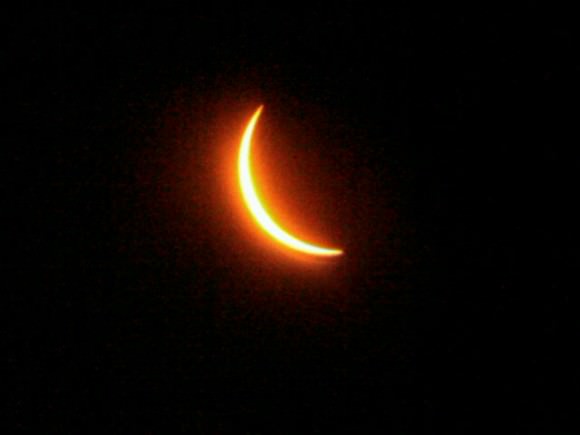
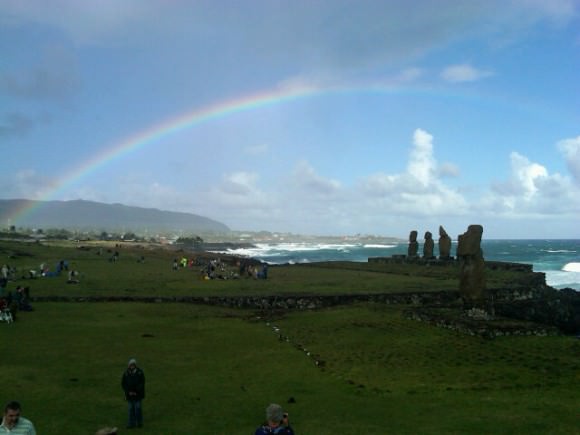
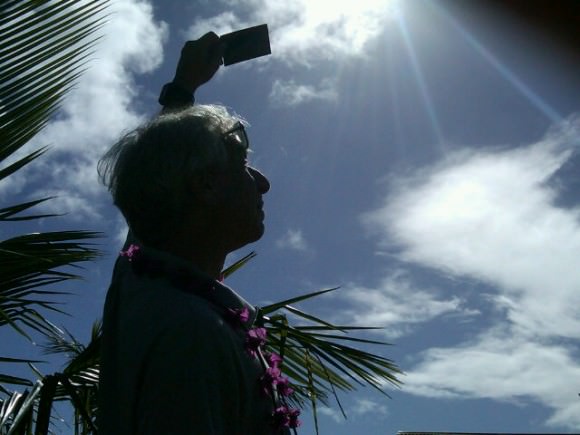
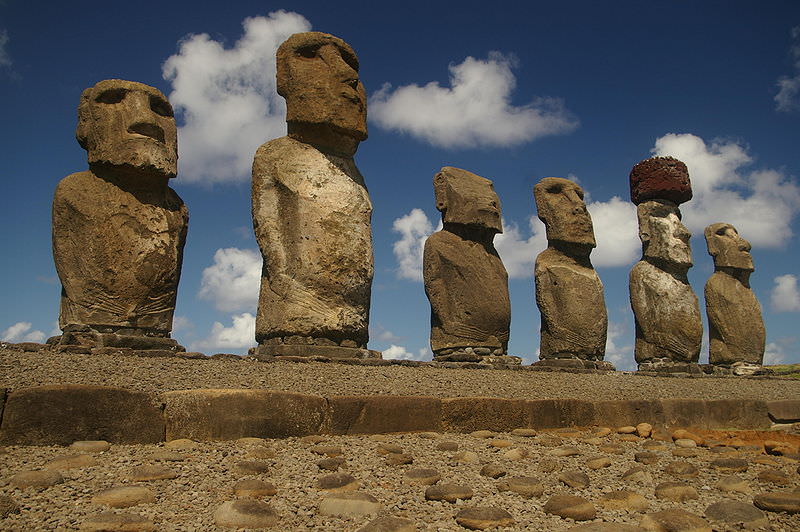

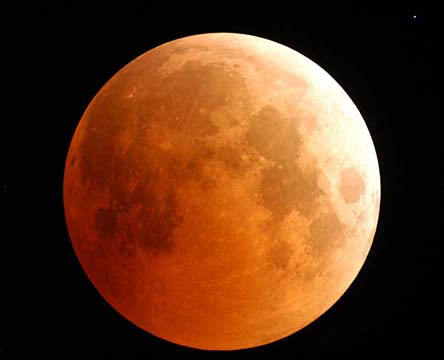
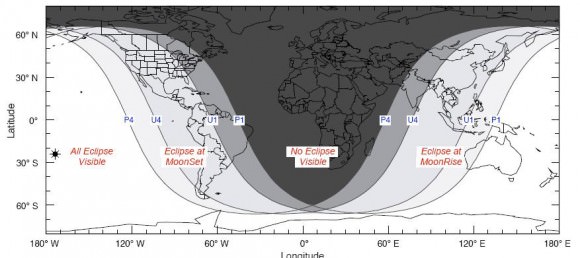
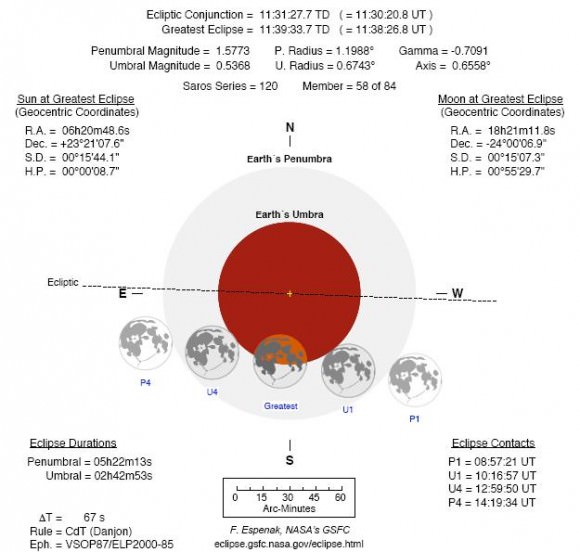
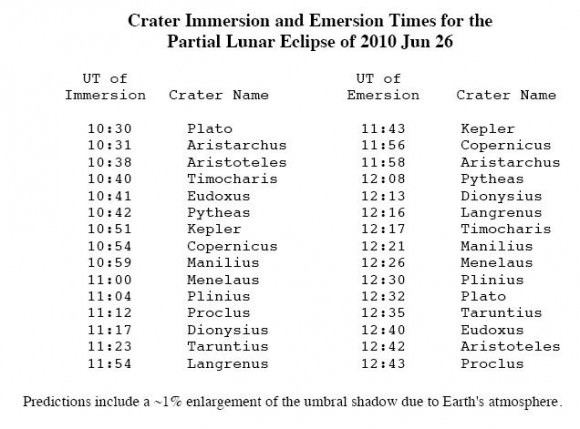
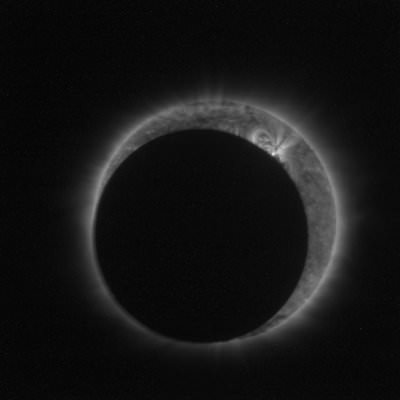
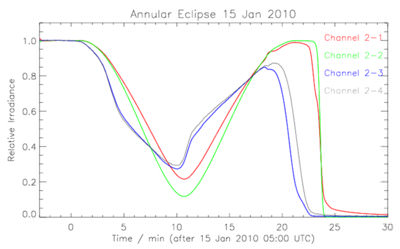
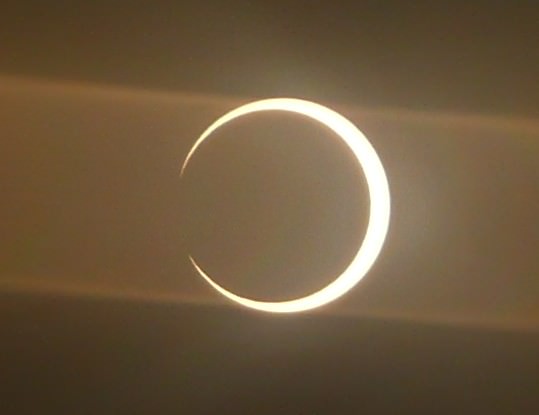
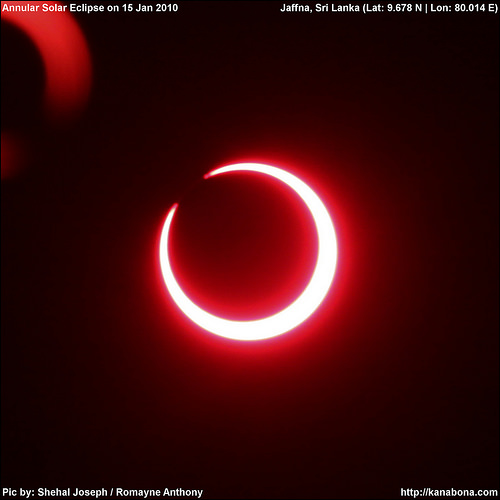
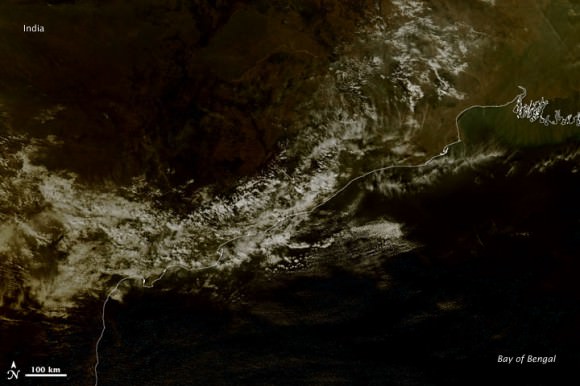
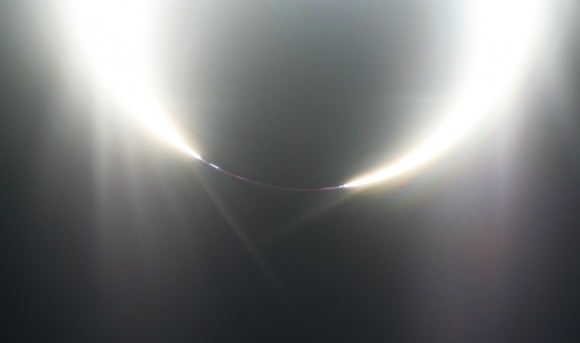
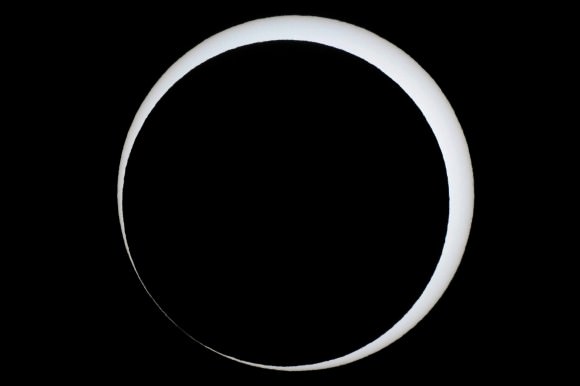

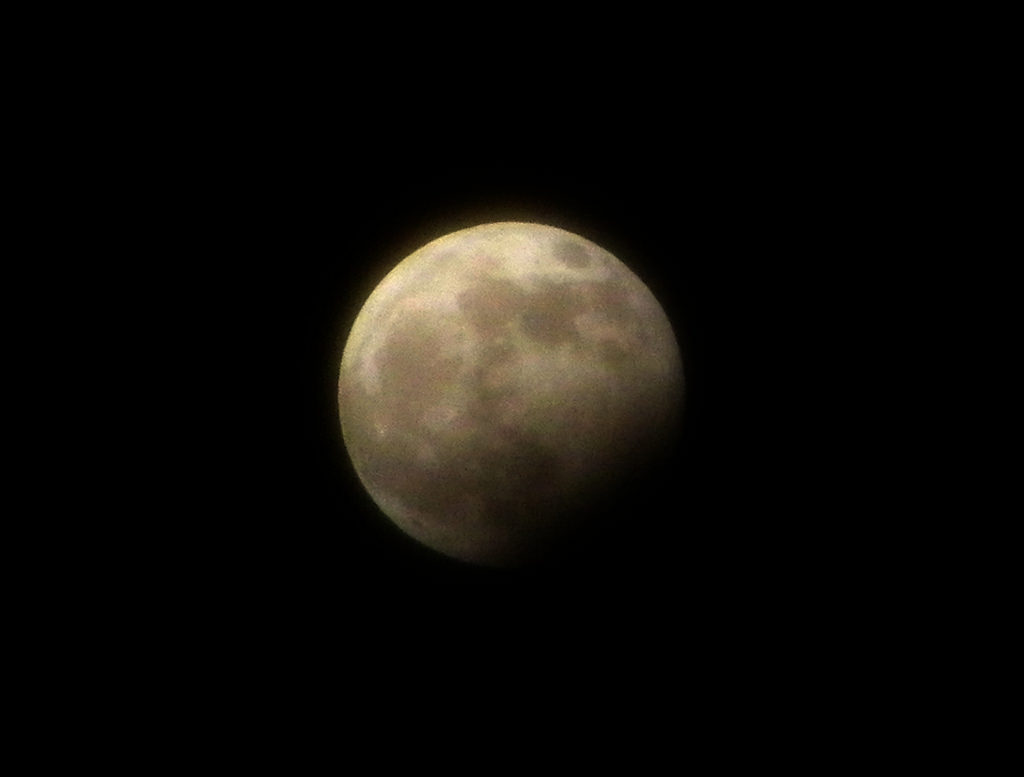
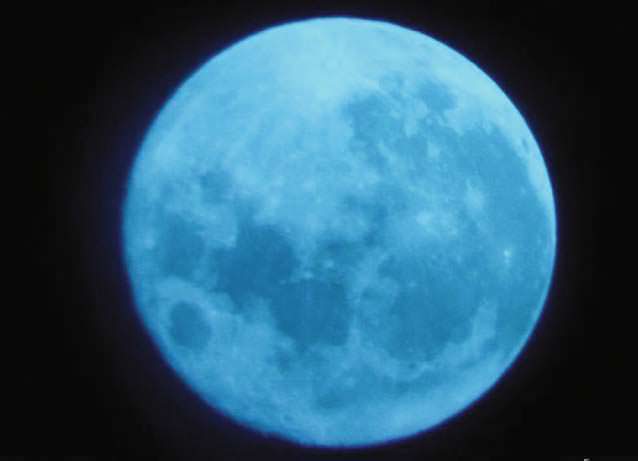
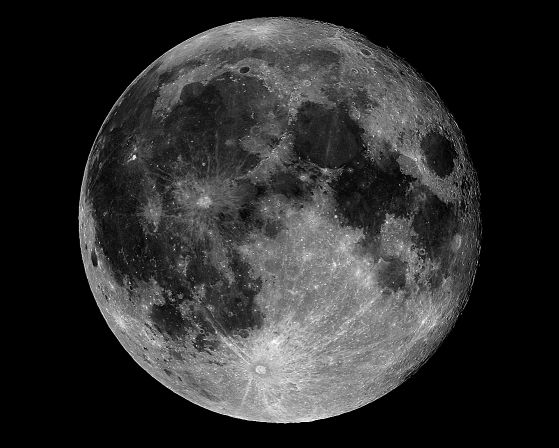
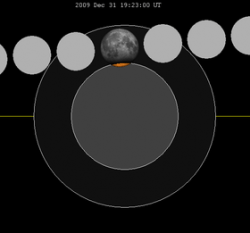 Only a very small portion of the Moon’s southern limb will be in the Earth’s umbral shadow, but there will be a noticeable darkening visible over the Moon’s face at the point of greatest eclipse. Need more? Then know this eclipse is the one of four lunar eclipses in a short-lived series. The lunar year series repeats after 12 lunations or 354 days. Afterwards it will begin shifting back about 10 days in sequential years. Because of the date change, the Earth’s shadow will be about 11 degrees west in sequential events.
Only a very small portion of the Moon’s southern limb will be in the Earth’s umbral shadow, but there will be a noticeable darkening visible over the Moon’s face at the point of greatest eclipse. Need more? Then know this eclipse is the one of four lunar eclipses in a short-lived series. The lunar year series repeats after 12 lunations or 354 days. Afterwards it will begin shifting back about 10 days in sequential years. Because of the date change, the Earth’s shadow will be about 11 degrees west in sequential events.